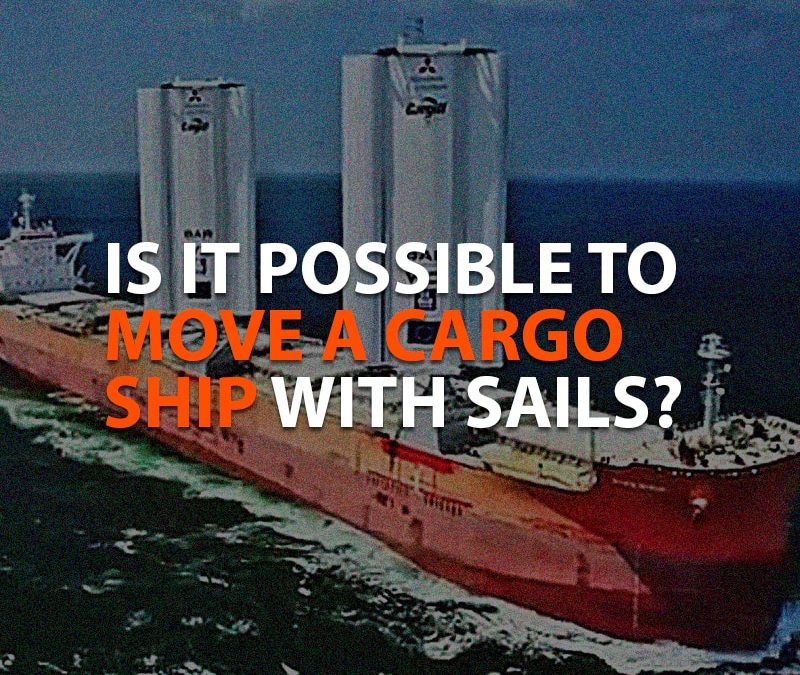It may seem incredible that we ask ourselves this question in the 20th century, but Is it possible to move a cargo ship with sails?
Technically, yes, it is possible to move a cargo ship using sails, but it’s important to clarify the context. While traditional sailing ships like those used in the past relied solely on wind power for propulsion, modern cargo ships typically use engines powered by fossil fuels or other energy sources for their primary propulsion.
However, there has been a resurgence of interest in using sails or wind-assist technologies to reduce the fuel consumption and environmental impact of cargo ships. These technologies are often used in conjunction with traditional engines and are known as “wind-assisted propulsion” systems. There are several types of wind-assist systems that can be installed on cargo ships to harness wind power:
- Flettner Rotors: These are cylindrical rotating columns that use the Magnus effect to generate thrust when the wind flows across them. Several cargo ships have been retrofitted with Flettner rotors to help reduce their fuel consumption.
- Kite Sails: Large kite-like sails can be deployed from a cargo ship to capture wind energy and provide additional thrust. These kites are often controlled remotely to optimize their performance.
- Aerodynamic Fins and Wings: Some cargo ships are designed with aerodynamic fins or wings that can be extended to capture wind energy and provide extra propulsion.
- Traditional Sails: In some experimental cases, cargo ships have been designed with traditional sails, often alongside modern propulsion systems. These are less common but are still being explored.
The goal of these wind-assist technologies is to harness the power of the wind to reduce the fuel consumption and emissions of cargo ships, particularly on long ocean voyages. They are seen as a way to make shipping more environmentally sustainable and energy-efficient.
While these technologies are being developed and adopted, they are not typically used as the sole means of propulsion for large cargo vessels, as the wind alone may not provide sufficient power for the ship’s needs. Instead, wind-assist systems are used in combination with conventional engines to achieve a balance between wind and engine power, reducing fuel consumption and emissions.






